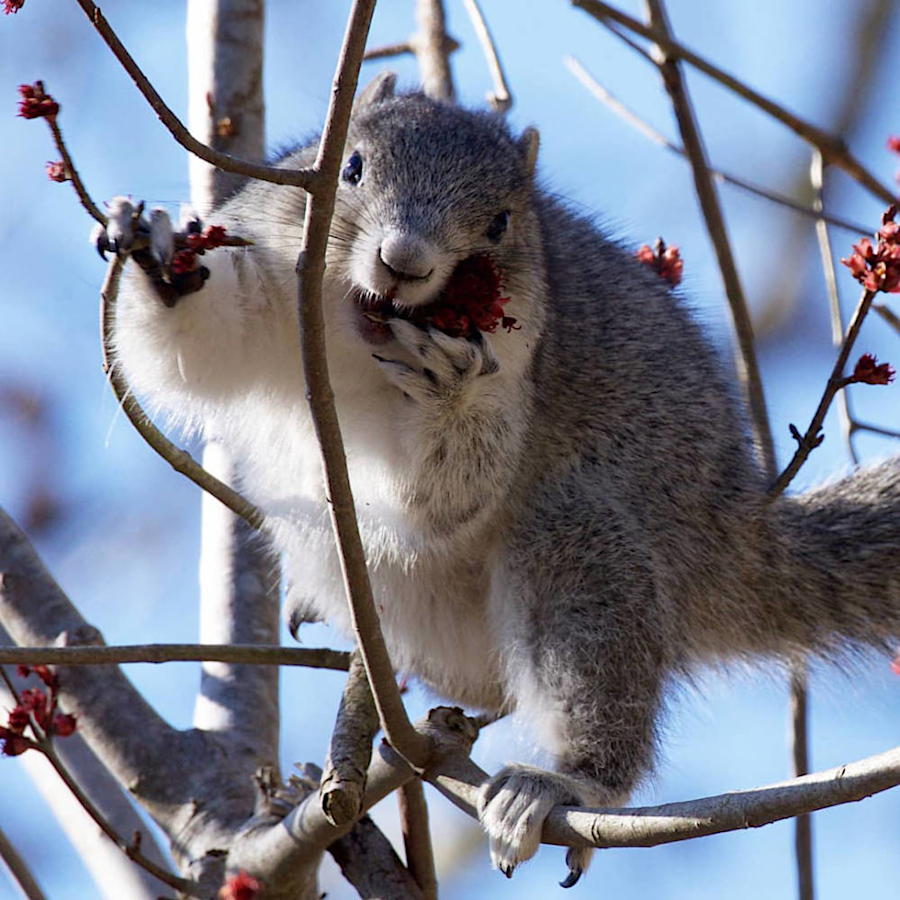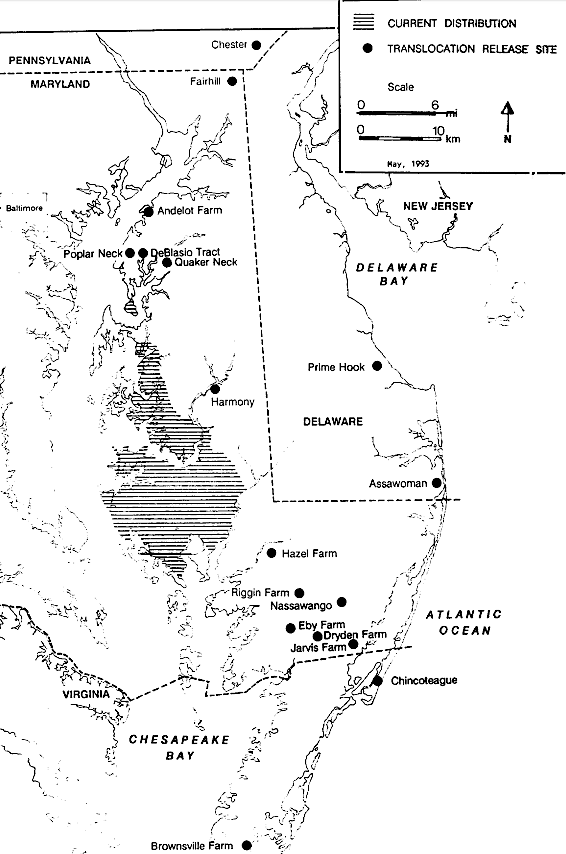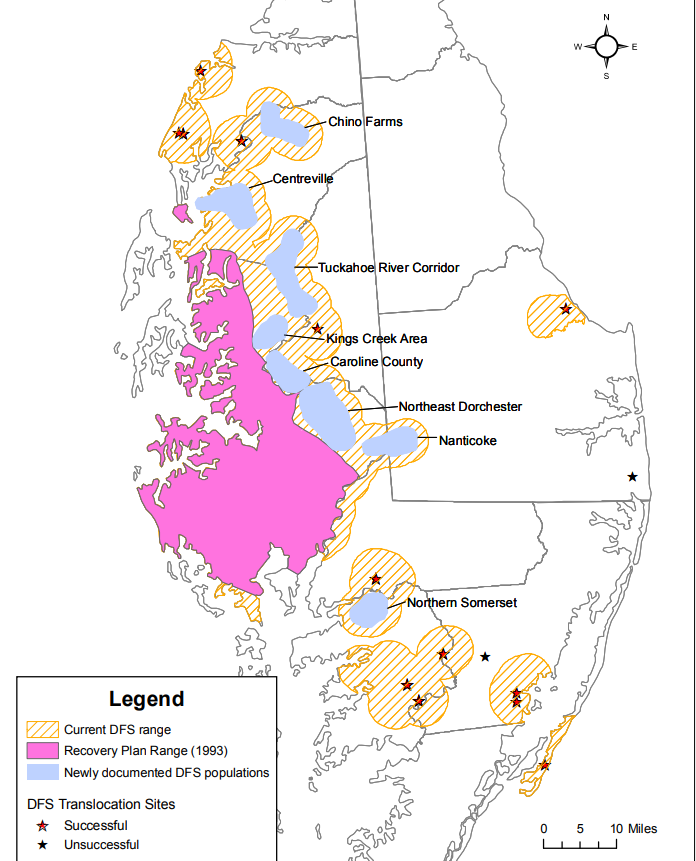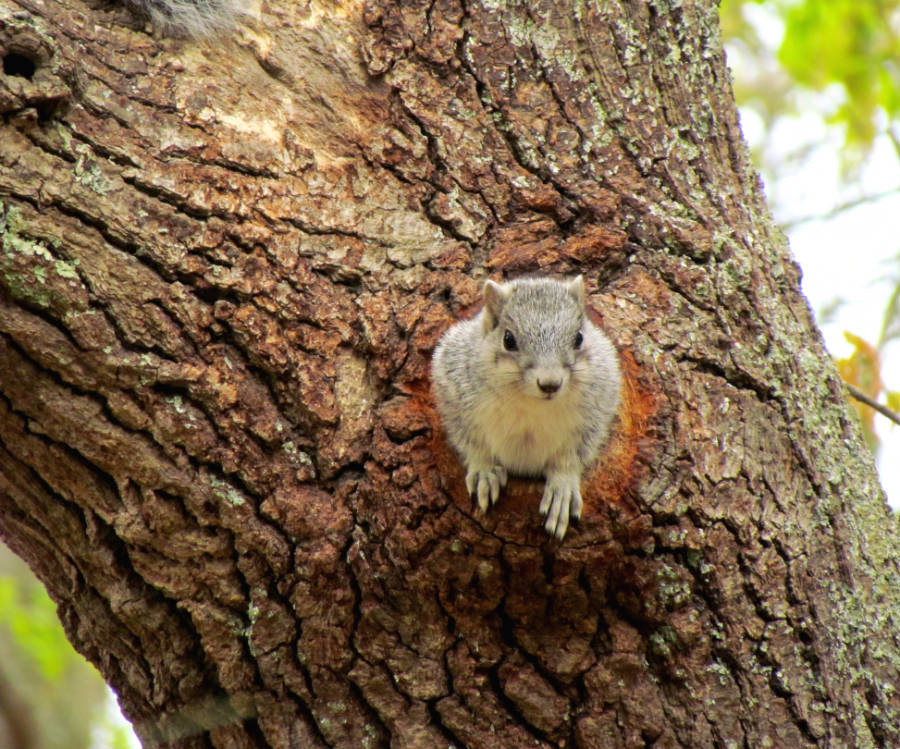
the once-endangered Delmarva fox squirrel subspecies (Sciurus niger cinereus), found only on the Eastern Shore
Source: US Fish and Wildlife Service, Delmarva Peninsula fox squirrel

the once-endangered Delmarva fox squirrel subspecies (Sciurus niger cinereus), found only on the Eastern Shore
Source: US Fish and Wildlife Service, Delmarva Peninsula fox squirrel
Fox squirrels are one of the five species of squirrels found in Virginia. The Delmarva fox squirrel subspecies (Sciurus niger cinereus) is one of ten subspecies, and was one of the first 78 species listed in 1967 as "threatened" or "endangered."
At the time, the subspecies was found in just four Maryland counties, occupying just 10% of its historic habitat. Conversion of its preferred habitat of mature forests to farmland, and repeated harvest of trees before a mature forest could be re-established, helped to reduce the number of squirrels to such a critically-low level that extinction was a serious possibility.
The Delmarva fox squirrel grows to be 50% larger than a grey squirrel and can weigh up to three pounds, so overhunting was thought to be a significant factor in the population decline. Despite the loss of historical habitat, there were suitable places remaining that were not occupied by Delmarva fox squirrels.
The squirrels were breeding successfully in the wood they occupied but not expanding their range, and the overall population was not increasing. As part of the recovery effort, hunting of Delmarva fox squirrels was banned in 1971.1
The other primary tool for recovery of the species, besides the ban on hunting, was to trap and transplant a group of individuals to suitable-but-unoccupied habitat. An experimental effort at Chincoteague National Wildlife Refuge in 1968-71 was successful. That led to the initial plan to remove the species from the "threatened and endangered" list:2
The 30 squirrels transplanted to Chincoteague grew to a population which exceeded 300. Squirrels were moved to 17 sites in Delaware, Pennsylvania, Maryland, and Virginia, and in 11 of those locations stable populations were established. Conservation easements on private land were acquired to protect newly-occupied habitat in perpetuity. Today 80% of the squirrels live on private land.

Delmarva fox squirrels were translocated to 17 sites, and established new populations at 11 of the reintroduction locations
Source: US Fish and Wildlife Service, Delmarva Fox Squirrel (Sciurus niger cinereus) Recovery Plan, 1993 (Figure 2)
A 1993 revision of the species recovery plan established a new definition of "success." Delisting would be suitable once 10 translocated colonies were successfully established throughout the historical range, five additional (post-1990) colonies were established, and mechanisms were in place to ensure long-term protection of those populations and the mature forest habitat they required.
By 2015, the total Delmarva fox squirrel population was estimated at 20,000 and the species had expanded its range to occupy nearly 30% of the Delmarva Peninsula. Most of the squirrels lived in Maryland. The US Fish and Wildlife Service, the Maryland Department of Natural Resources, and the equivalent state agencies in Delaware and Virginia celebrated the "delisting" of the species in 2015.3
At that time, there were only two places in Delaware with the squirrels. The Delaware Department of Natural Resources and Environmental Control started a five-year translocation program in 2020 to expand he range of occupied habitat within Delaware:4

by 1993, wildlife agencies could see expansion of the Delmarva fox squirrel (DFS) range due to successful relocation efforts
Source: US Fish and Wildlife Service, Delmarva Peninsula Fox Squirrel (Sciurus niger cinereus) 5-Year Review: Summary and Evaluation (Figure 2)
Source: Delaware Department of Natural Resources and Environmental Control, Delmarva Fox Squirrel

the Delmarva Peninsula fox squirrel (Sciurus niger cinereus) prefers to den in a tree cavity, rather than build a nest of leaves on a branch
Source: US Fish and Wildlife Service, Delmarva Peninsula fox squirrel in tree cavity nest